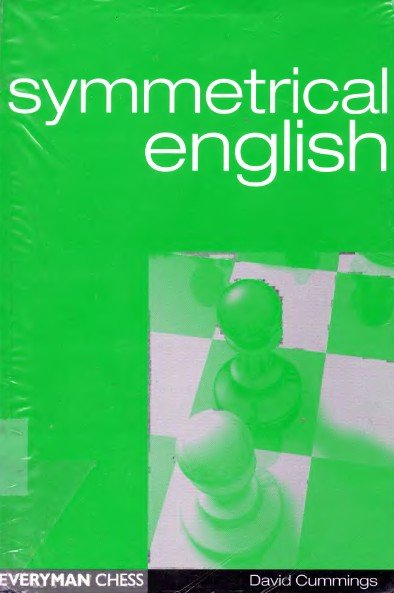Symmetrical English - download chess book

The Symmetrical English (1. c4 c5) is an important part of chess theory, and is played at every level of the game from World Championship to club chess. Soon after starting work on this book, I began to appreciate the wide spread of material categorised under 1. c4 c5. While 1. c4 and 1. Nf3 are less popular than 1. e4 and 1. d4, any tournament player who neglects to prepare a response to them as Black, does so at his peril. I have tried to be as objective as possible and cover both Black's and White's ideas and interests on an equal footing.
I had the following goals in mind for this book:
- Give a "feel" for the opening through games that illustrate recurring themes, some of which often occur deep into the middle-game.
- Cover the most critical lines and present theory that is up to date at the time of writing, together with suggested improvements over published works. Inevitably, given the huge volume of games available, something had to give, so I compromised on the depth of coverage of non-critical material. For example, if in a certain line there are four different lines that all equalise for Black, I did not try to cover them all in-depth.
- Give an insight into the move order issues and transpositions (into and out of the Symmetrical English), which are such an important facet of this opening. The fact is that many of the main lines in the Symmetrical English can be reached by almost any permutation of the first 7 or 8 moves! There are also a number of tricks along the way to throw the unwary off their preferred path. At one point I wondered whether to "sanitise" the move order in the main games to conform to standard categorisations such as the ECO system. I decided against this, since the variety of actual move orders practised by top players is very instructive, even though it makes the subject-matter initially somewhat harder to grasp. However, I have wherever possible explained the 'official' move orders and how the practical material relates to these.
I believe the "complete games" approach is well suited to this subject matter. There seems little point in presenting the latest 1 c4 c5 theory in encyclopaedic fashion without explaining some thematic examples of, for example, how and when to go for a ...d7-d5 break in the Hedgehog, or what the key plans are in a 'quiet' symmetrical line. At the same time, it is naive, especially the higher you go, to expect to avoid concrete knowledge in any modern opening. Many lines are as sharp as main-line 1. e4 or 1. d4 openings.
Some chapters have a longer introduction, covering typical ideas, than others. This is no accident. Some lines have positional ideas or common tactics that crop up in a large number of games and across several sub-variations, while others are less systematic. While there are some general principles that can be abstracted, almost every line has its own character and concrete nature.
Author: Cummings David
Title: "Symmetrical English"
Released: 2001
Format: djvu
Quality: good
Number of pages: 162
Size: 3 Mb
Comment 0